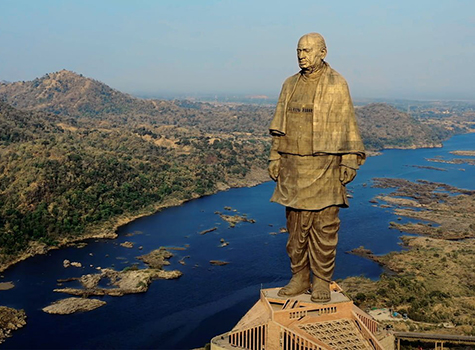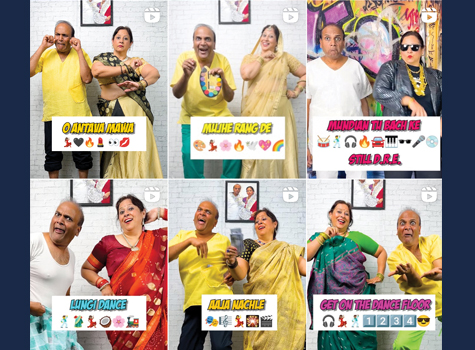By Alex Counts

At its core, philanthropy is about building a better society: better for its people, and better for the planet. Oftentimes, it unlocks latent potential through social innovation and community mobilization. The impulse originates in simply having a vision of a better world.
My mentor of nearly 40 years, the Bangladeshi Nobel Peace Prize laureate Muhammad Yunus, has said that we “build the world that we imagine.” After seeing so much that was once considered science fiction become reality through technological innovation, he urges people to write “social fiction” in the hopes that it will tickle our collective imagination enough to spur new thinking and action needed to create a better society. His own social fiction is rooted in achieving zero poverty, zero unemployment, and zero net carbon emissions. For India, one can add priorities such as gender equality, every child in school and learning well, and protecting the incredible biodiversity of the nation.
Philanthropy and, increasingly, impact investing can serve as the fuel for propelling us towards realizing an improved society. Some years ago, in a courageous act of collective introspection, Indiaspora and Dalberg, the global consulting firm, looked into the state of Indian American philanthropy. There had been a series of studies of some of the barriers to diaspora giving to India by the Gates Foundation, Dasra, Bridgespan, and most impressively by the MacArthur Foundation. The Indiapora/Dalberg study attempted to take the scholarship to a more granular level by measuring how much Indian Americans were giving of their time and money to charities.
The findings were striking. The Indian diaspora in the United States was volunteering 220 hours per year, almost double the national average. But giving financially lagged: Indian Americans were estimated to give about one-third as much as the overall population. During the conference when these findings were announced, Sunil Wadhwani, a leading entrepreneur and philanthropist, challenged the group to commit to tripling diaspora philanthropy.
It was at this time that the India Philanthropy Alliance was in its embryonic stages. The founders were simply having monthly meetings to explore collaborative ideas, and it would be more than a year before the Alliance would announce its formation publicly. But Wadhwani’s challenge based on the study findings animated this nascent group, which I now lead, to think big from the outset.
We studied giving days that are held in communities and universities around the United States, most specifically North Texas Giving Day, as well as the Daan Utsav movement in India. Everyone we approached eagerly shared their experiences, tools, and learnings. Up to that point, our biggest public campaign was our national youth essay competition, now in its fifth year, which Saathee magazine has powerfully covered in the past. But in late 2021 we committed to something much bigger: an annual national campaign called India Giving Day (IGD).
IGD was not exclusively focused on diaspora philanthropy, as it welcomed donations to India from any American person, family, company, or foundation. But the bedrock of this movement to catalyze increased, higher impact, and more joyful giving was always going to be Indian American professionals, entrepreneurs, and youth.
The seed funds to start our inaugural campaign that culminated in March 2023 came from three family foundations initiated by Deepak Raj, Suri Sehgal, and of course, Sunil Wadhwani. Their “angel investments” let us develop a plan that was intriguing enough to the Rural India Supporting Trust (RIST) that they took a chance on our untested model with a generous grant of $250,000.
We quickly assembled a group of 25 leading nonprofits to be featured on the India Giving Day website, and a dozen national co-chairs whose reputations of philanthropists were impeccable. We were thrilled when the creativity of the Indian American community was mobilized to make the first campaign a success. Inspirational support seemingly came out of nowhere.
For example, Shivansh Chaya Kapil, a young artist in India, wrote a gorgeous theme song for IGD: “India, here to give.” It immediately went viral. Susan Appe, an American professor who had been studying nonprofit initiatives in India for decades, took time away from her scholarly research to write an article for laypeople about India Giving Day. It was viewed more than 64 million times on Yahoo alone and reprinted in the Chronicle of Philanthropy, the most respected publication related to giving in the United States.
In the end, India Giving Day raised more than $1.3 million through 1,031 individual donations. A second campaign that concluded on March 1, 2024 quadrupled the amount raised, to more than $5.5 million, and increased the number of donors by more than 70%. The MacArthur Foundation joined RIST as a major sponsor, and grassroots events were held in the following cities: Cambridge, MA; Fremont, CA; Ankeny, IA; Atherton, CA; New York, NY; Chicago, IL; Plano, TX; Dallas, TX; New Hyde Park, NY; Hicksville, NY; Fort Myers, FL; Charlotte, NC; Bay Area, CA; Fairfax, VA; Cincinnati, OH; Boston, MA; Columbia, MO; New Brunswick, NJ and Philadelphia, PA.
While India Giving Day is clearly a product of the diaspora and its interpretation of American-style philanthropy, it is also distinctly Indian in many ways. This goes beyond the assistance and advice the IGD team received from Daan Utsav, or the influence of Gandhian ideals. Indian American philanthropy has always been more communal than typical American philanthropy. It is powered by grassroots chapters and volunteer-led galas. In contrast, it is more common for Americans to make quiet decisions to give in their homes, motivated either by an emotional reaction to something seen on television, the dedication of a friend or family member to a specific cause, or the detailed study of a societal problem.
It should not be surprising, then, that progress toward realizing the full potential of Indian diaspora philanthropy would be community-based, celebratory, colorful, and can-do. Importantly, it has also been powered by youth—despite their not having been born and educated in India. The leading peer to peer fundraisers in IGD 2024 were three youthful idealists under the age of 30.
One was Srithan Devrashetty. At just 13 years old, Srithan’s passion for aiding children with Congenital Heart Disease (CHD) attracted significant support from friends and family, resulting in an impressive fundraising total of 74 donors and $2,512 raised for the Heart to Heart Foundation (H2H). Another was Preetham Reddy, a 26-year-old young adult whose own successful battle with CHD inspired him to want to help those in India who did not have access to the kind of health care he did. He brought in 85 donors contributing $5,166 to H2H. And then there is Nitin Charles, a 19-year-old Rutgers University student who raised $1,135 from 61 unique donors for his favorite charity, the Vicente Ferrar Foundation USA.
People are now seeing that philanthropy impacts not just the recipients, but also the givers. As Deepak Raj and Raj Gupta, two early donors to the IGD campaign, wrote in an important article, “Research shows that people who give the most to charities are, on average, happier, healthier, and more successful than those who give less, or not at all.”
Naturally, the Indian government is the most important player in addressing the remaining social and environmental challenges the nation faces. But it is noteworthy that pragmatic state governments, inspired by the exciting notion of competitive federalism, are partnering creatively with nonprofits that are themselves fueled by philanthropic generosity—a topic addressed by Nishant Pandey of the American India Foundation and myself in an article titled “Nonprofit Success Strategies for Partnering with Government: Lessons from India.”
Indian Americans are the sleeping giant of American philanthropy. As they approach their full potential, they will transform the philanthropic landscape in the United States and India, as they have already done in fields such as information technology, medicine, and academia. As a result, zero poverty, gender equality, living in harmony with the natural environment, as well as universal education and employment are being transformed from far-off dreams to tomorrow’s reality.
Alex Counts is the Executive Director of the India Philanthropy Alliance, the author of four books and an adjunct professor at the Johns Hopkins University’s School of Advanced International Studies. Previously, he established Grameen Foundation in 1997 with the support of Nobel Peace Prize laureate Professor Muhammad Yunus and served as its CEO for 18 years.
Contact: alex@indiaphilanthropyalliance.org



